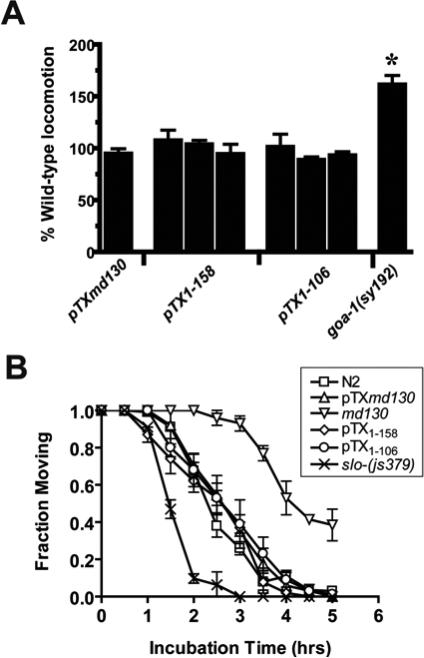Fig. 2.
VA resistance not due to enhancement of locomotion or neurotransmitter release. (A) Locomotion rates of age synchronized young adults from strains transformed with pTXmd130 (MC168), pTX1−158 (MC150, MC151, and MC152), and pTX1−106 (MC158, MC159, and MC139) was measured by the number of body bends/minute and normalized to concurrent wild-type N2 values. Values are mean ± sem of > 10 animals. The hyperactive locomotion mutant, goa-1(sy192), is shown as a positive control 1. * - significantly different from 100% @ p < 0.01, two-tailed t-test. (B) Aldicarb sensitivity of a subset of truncated syntaxin transformants. The fraction of animals moving after various incubation times on agar plates containing 0.35 mM aldicarb. Each point represents the mean ± sem of triplicate measurements of at least 30 animals/measurement. The aldicarb hypersensitive/isoflurane resistant strain slo-1(js379) and the aldicarb resistant/isoflurane resistant unc-64(md130) strain are shown for comparison 2-4 .

